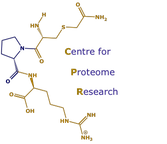PhosphoLFQ of NF-kB/RelA in DNA damage
Amy E Campbell, Caterina Ferraz Franco, Ling-I Su, Emma K Corbin, Simon Perkins, Anton Kalyuzhnyy, Andrew R Jones, Philip J Brownridge, Neil D Perkins, Claire E Eyers (2021) Temporal modulation of the NF-κB RelA network in response to different types of DNA damage Biochem J doi: 10.1042/BCJ20200627. Online ahead of print.
Different types of DNA damage can initiate phosphorylation-mediated signalling cascades that result in stimulus specific pro- or anti-apoptotic cellular responses. Amongst its many roles, the NF-κB transcription factor RelA is central to these DNA damage response pathways. However, we still lack understanding of the co-ordinated signalling mechanisms that permit different DNA damaging agents to induce distinct cellular outcomes through RelA. Here, we use label-free quantitative phosphoproteomics to examine the temporal effects of exposure of U2OS cells to either etoposide (ETO) or hydroxyurea (HU) by monitoring the phosphorylation status of RelA and its protein binding partners. Although few stimulus-specific differences were identified in the constituents of phosphorylated RelA interactome after exposure to these DNA damaging agents, we observed subtle, but significant, changes in their phosphorylation states, as a function of both type and duration of treatment. The DNA double strand break (DSB)-inducing ETO invoked more rapid, sustained responses than HU, with regulated targets primarily involved in transcription, cell division and canonical DSB repair. Kinase substrate prediction of ETO-regulated phosphosites suggest abrogation of CDK and ERK1 signalling, in addition to the known induction of ATM/ATR. In contrast, HU-induced replicative stress mediated temporally dynamic regulation, with phosphorylated RelA binding partners having roles in rRNA/mRNA processing and translational initiation, many of which contained a 14-3-3ε binding motif, and were putative substrates of the dual specificity kinase CLK1. Our data thus point to differential regulation of key cellular processes and the involvement of distinct signalling pathways in modulating DNA damage-specific functions of RelA
Different types of DNA damage can initiate phosphorylation-mediated signalling cascades that result in stimulus specific pro- or anti-apoptotic cellular responses. Amongst its many roles, the NF-κB transcription factor RelA is central to these DNA damage response pathways. However, we still lack understanding of the co-ordinated signalling mechanisms that permit different DNA damaging agents to induce distinct cellular outcomes through RelA. Here, we use label-free quantitative phosphoproteomics to examine the temporal effects of exposure of U2OS cells to either etoposide (ETO) or hydroxyurea (HU) by monitoring the phosphorylation status of RelA and its protein binding partners. Although few stimulus-specific differences were identified in the constituents of phosphorylated RelA interactome after exposure to these DNA damaging agents, we observed subtle, but significant, changes in their phosphorylation states, as a function of both type and duration of treatment. The DNA double strand break (DSB)-inducing ETO invoked more rapid, sustained responses than HU, with regulated targets primarily involved in transcription, cell division and canonical DSB repair. Kinase substrate prediction of ETO-regulated phosphosites suggest abrogation of CDK and ERK1 signalling, in addition to the known induction of ATM/ATR. In contrast, HU-induced replicative stress mediated temporally dynamic regulation, with phosphorylated RelA binding partners having roles in rRNA/mRNA processing and translational initiation, many of which contained a 14-3-3ε binding motif, and were putative substrates of the dual specificity kinase CLK1. Our data thus point to differential regulation of key cellular processes and the involvement of distinct signalling pathways in modulating DNA damage-specific functions of RelA
